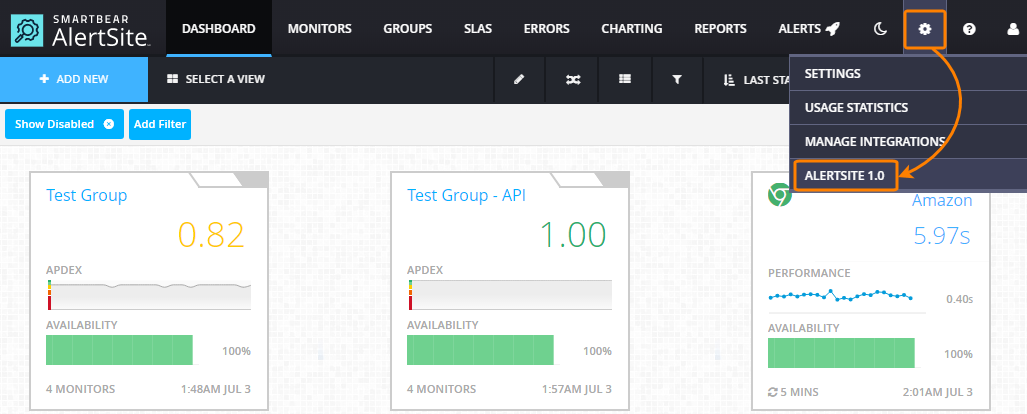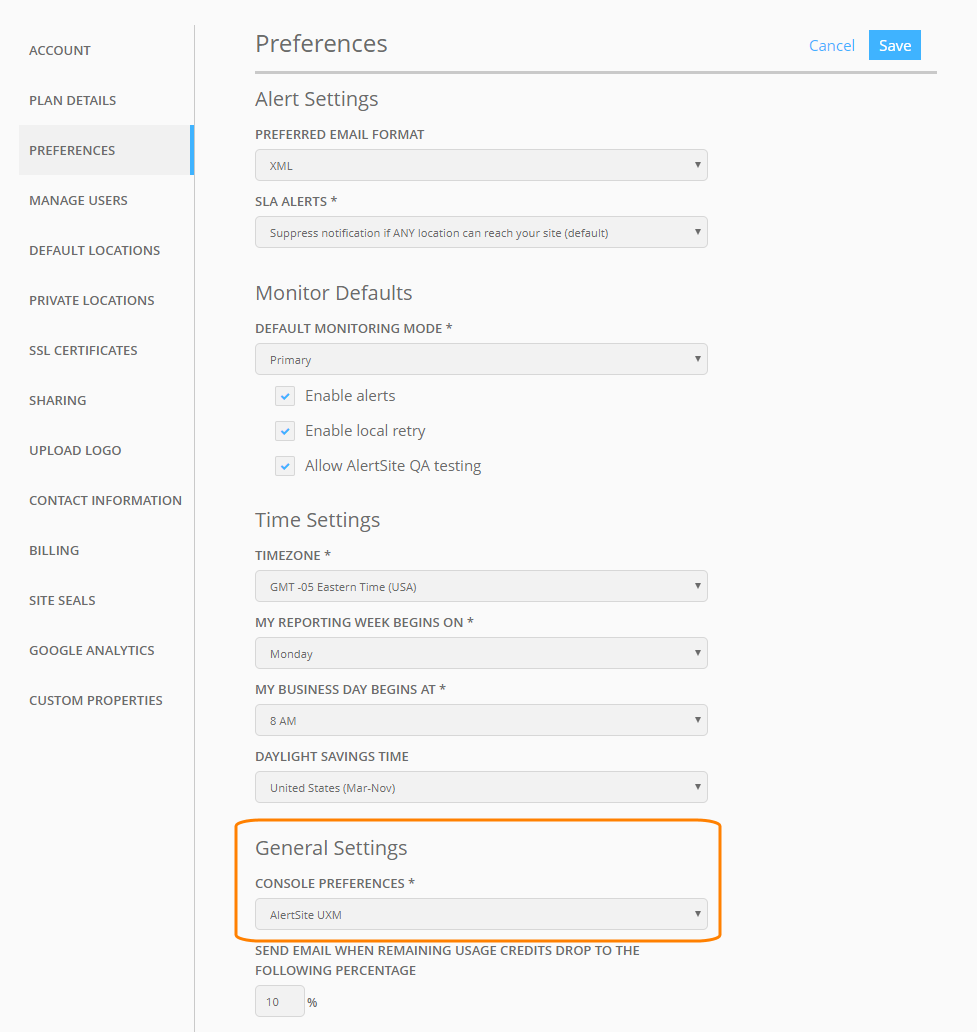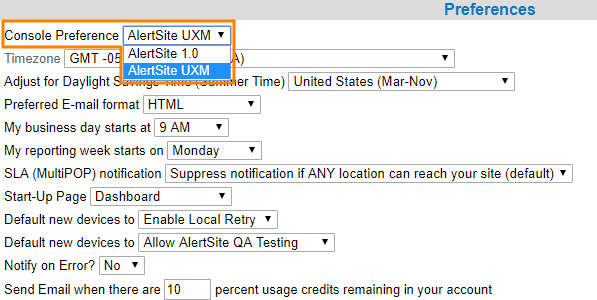AlertSite has two interfaces: the classic one (AlertSite 1.0) and the new one (AlertSite UXM). You can easily switch between the interfaces to monitor your websites and web applications, but keep in mind there are some differences between them. Some features and variations in terminology are among the main differences. This guide compares the interfaces.
Switch Between AlertSite UXM and 1.0
You can choose the interface to work with and quickly switch between them.
To switch from AlertSite UXM to AlertSite 1.0, select > AlertSite 1.0 from the top menu:
To switch from AlertSite 1.0 to AlertSite UXM, click the link in the header:
You can also set an interface as the default one. The default interface opens when you click links in alerts, and after you upload scripts from AlertSite's web recorder, DéjàClick. To set the default interface:
AlertSite UXM
Terminology
Sometimes, the same concepts have different names in AlertSite UXM and AlertSite 1.0. The following table sets the correspondence:
| AlertSite UXM | AlertSite 1.0 |
|---|---|
| Monitor | Device – or – Site (for a single URL and server monitors) – or – Transaction (for multi-step monitors) |
| Real-browser monitor | DéjàClick transaction |
| SoapUI monitor | API transaction |
| Alert | Notification |
| Alert recipient | Notifier |
| Recipient group | Notifier group |
| Monitor blackout | Device blackout |
| Local retry | Local error verification |
Features
Although the AlertSite UXM functionality does not differ from AlertSite 1.0, there are currently some features that are available either only in AlertSite UXM or in AlertSite 1.0:
| Feature | Available in | |
|---|---|---|
| AlertSite UXM | AlertSite 1.0 | |
| Monitor groups | ||
| Apdex | ||
| Creating PagerDuty alert recipients | ||
| The Use IPv6 option (to enable IPv6 monitoring) | ||
| Adding ServerAgents and viewing the ServerAgent status | ||




